THE FLOOD, Then and Now
Emmanuel M. Luna, Ph. D.
Professor of Community Development
University of the Philippines
Let me start this conversation with an experience:
September last year, my wife and I were in an airport hotel in Seattle for our early flight to New York the next day when we received a text message from a friend back in Manila asking me how she can be rescued because the flood was already chest deep inside her house and was still rising. I had to say that I was in USA and referred her to a local rescue team in the city. The next day in New York, what we envisioned as a very pleasant way of celebrating our silver wedding anniversary was disturbed by the news that Metro Manila was heavily flooded. The news and sights of the flooded communities shown in CNN, in the internet and facebook were enough for me to ask: “God, what is your message in allowing Metro Manila to experience such a tragic flood?” That night, I wept while at shower, shivering at what God might answer.
Upon arriving in Manila in October, I led a health emergency relief operation for six weeks that assisted flooded communities, where the flood reached 30 feet in some areas, submerging the whole community. A month had passed after the flood but still, hundreds of families were crowded in evacuation centers that were poorly equipped with health and sanitary facilities. Some evacuation centers were even flooded and I wondered why the families were allowed to stay there. They lost their sources of livelihood. The faces of suffering, of poor people becoming poorer because of the flood, were so vivid, penetrating one’s soul.
The gruesome sight made me remember the beauty, comfort and modernity of the US cities we just visited a few days ago-Seattle, New York, Washington DC, Baltimore and Los Angeles. The contrast of people, scenes and feelings in the two worlds reinforced what I believe as the existence of a “wonder land” and “real land”. And in my own “real land” there are pockets of wonders amidst social conditions that needed to be changed.
I see Jesus walking in the streets of Jerusalem, teaching multitudes, feeding and healing people.
My encounters with people that touched me flashed back: women carrying their children begging in the streets of Addis Ababa in Ethiopia; Bangladeshi women waiting patiently for a discussion about micro-finance; the many beautiful transsexual ladies dancing in bars in Patpong, Bangkok; Cambodian friends sharing how they survived the killing fields during the Pol Pot regime; a Vietnamese woman government official lamenting that she could not speak about the corruption taking place in the government; the vendors running away from the police for selling souvenir items in the streets near Eiffel Tower; a fat woman in two-piece black bikinis waiting for a customer in a window display in Brussels; overseas workers in Milan serving as domestic helpers, leaving their own families behind, and a Caucasian homeless elderly couple walking in a street of San Francisco, the man grasping the hand of her beloved wife limping with pain as she walked. There are many more faces of sufferings, of confusions, conflicts, subservience, and restlessness.
The world during the first flood at the time of Noah seems to have reincarnated in new forms of manifestations. But unlike the first, where the response of the faithful was to save the world through an ark, today, we ask: Where is Jesus in all these places? What does urban mission mean to these people? What does it mean to us? There will be no more great flood as in the time of Noah and the rainbow reminds us of God’s great love and promises. But there would be always storms and lightning in our lives, in the world we live in. These are the challenges we Christians have no recourse but to face!

